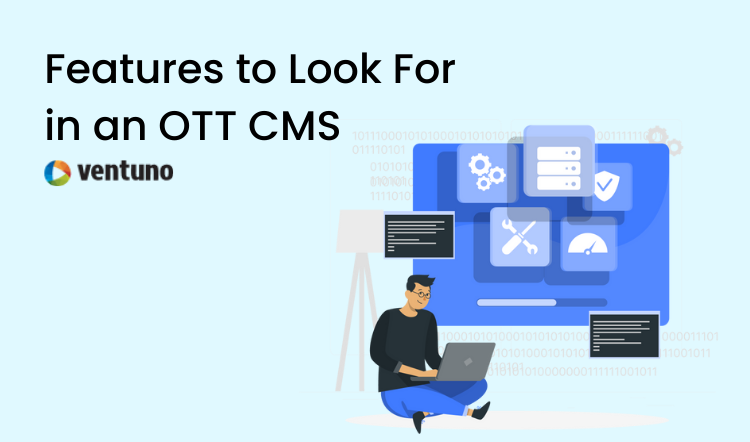What is AVOD and why is it growing?
Last Updated on March 31, 2023 by Anjana Devi
AVOD (Advertising Video On Demand) is rapidly taking center stage in the VOD industry. The rise of popular players in the AVOD space such as Hulu, Roku, and Tubi has forced the balance to shift from SVOD to AVOD. Driven by the race for audience attention and profitability, leading new services are going through the AVOD route of monetization. In fact, Digital TV Research predicts AVOD to generate $56 billion in revenues, almost double from $26 billion it generated in 2018.
There are multiple factors for this shift. The first one being, the need for flexible on-demand content continues to grow. Viewers are becoming overwhelmed with the choices offered by streaming services and are hesitant to pay, resulting in subscription fatigue.
Advertisers are putting more efforts to harness data and offer personalized offers. The rise of AVOD is spurred by advanced technologies which earlier had a limited deployment ability. The ability to convert audience engagement to revenues is driving the adoption of AVOD. At a time when advertisements are becoming more relevant and tailored for the end-users, AVOD is the answer to advertisers looking for higher monetization. And with consumers looking for entertainment without financial outlay, AVOD is only going to attract a greater audience.
What is AVOD
AVOD stands for advertising video-on-demand. Instead of having customers pay a fee for watching video content, they are served ads. For instance, if you are a YouTube content creator, advertisers will pay you a fee for every ad displayed on your video.
The revenue generated through this arrangement can then be used to offset your hosting and production costs or invest in marketing.
AVOD is a great model for content creators whose videos generate many views but are unsure if people will willingly pay for viewing them.
Swedish YouTuber and gamer PewDiePie would not have been able to earn $2 million in total ad revenues per month if it were not for YouTube! Generally speaking, the AVOD model works best for lifestyle, news, and entertainment categories.
Also read: 7 ways to monetize videos without relying on YouTube
The rise of AVOD
Despite its recent rise in prominence, the AVOD monetization model has been around for a long time. Luxembourg-based RTL Group is among the frontrunners in AVOD in Europe. In 2007, they launched their first AVOD service in Germany, called TV Now.
Another great example is Roku. A large number of its profits (close to $1 billion) are from a combination of its AVOD app, The Roku Channel, and the ad sales on third-party apps.
The biggest USP of AVOD is perhaps allowing ad-supported TV content to not only exist but also potentially thrive in the streaming era.
3 things to consider before choosing an ad-based model
AVOD model is often overlooked by premium content providers confident that their customers will pay for content without any interruptions. However, if you are looking to step into the AVOD space, here are three things to consider
1. Quality of content
If your videos are relatively generic and inexpensive to produce, and shorter, it is better to monetize them through an ad-based model. That is because there are fewer chances customers would pay for general content available at other free platforms! Costly content is better monetized with TVOD and SVOD.
How-to (cooking, DIY crafts) videos, online courses, and comedy content are best monetized through AVOD. These videos have a better chance of amassing massive viewership in a shorter period because they offer actual value to your audience and build a stronger connection with them.
2. Ad network integrations
It is no secret that video ads help advertisers deliver creative storytelling and connect with the audiences.
Although it is best to have direct relationships with advertisers, that is not always possible if you are new to video content creation.
When you decide to offer your video content for free, choose the right ad network to get the best advertising deals. They should match your budget and the type of your audience.
Your ultimate goal is to reap the service’s rewards, and the right ad network will keep you away from this worry.
The easiest ad network to get started off with is Google Ads. It is one of the most famous ad networks out there and can be used for video and display ads.
SpotX is a trusted video advertising platform that guarantees total transparency when keeping a tab on CPM rates across screens. It ensures that you generate significant revenue from ads. Simultaneously, you enjoy brand safety controls. They have integrable tools for managing ad inventory.
Another is Verizon Media, which provides publishers access to advertisers and ad server technology solutions to attain premium demand ad inventories.
3. Video views strength
You can only make as much money through this monetization model as your advertisers are confident about your platform reach and video views. The ad spends you fetch on your videos will differ based on the viewers you attract.
So, if you have a large following, advertisers will pay more. If not, you should set up a marketing strategy to boost video viewership. Plan accordingly, and get going.
Pros and cons of AVOD
Pros
1. Easy user acquisition
In AVOD, since your viewers don’t have to pay for any video, they can sign up and start watching your content. Offering relevant recommendations can ensure viewers spend more time on the platform (YouTube does that), boosting revenue generation probabilities.
2. Simple revenue distribution model
Suppose video content creators and ad networks split the revenue model (e.g., 60:40 or 70:30) with the number of ads viewed by the customers, simplifying the revenue distribution process. Plus, bidding on ads internally is a lot easier for smaller video content creators.
3. Multiple varieties of models
Video ads vary in length. They can come before the main video (pre-roll), between (midroll), or after the video ends. Besides, in-video ads that start playing without sound at first and text overlay ads over the video have also become quite popular.
Thus, depending upon the video content and length, you can choose ads that will not hamper the viewing experience.
4. Personalized ad recommendations
The AVOD service can allow you to engage your viewers and make the brands advertising on your videos happy by recommending ads to only relevant audiences. For instance, you can run different ads for different viewers on your videos.
5. Low barrier to entry
Everyone has the opportunity to watch your content for free. One does not need a satellite or cable subscription. Plus, your videos will be available to a broader audience. AVOD can be an incredibly scalable revenue solution for growing audiences.
Cons
1. Lower control over bandwidth costs
Since AVOD videos are free to watch, you can get even millions of viewers within a few hours of uploading it. This will spiral your bandwidth costs. This is in contrast to SVOD and TVOD videos where people pay before watching your content.
2. Delayed profitability
Since bandwidth can be a problem, optimizing ad parameters and content type can sometimes take years and hence affect profitability. Be consistent with your video creation and marketing. Ensure that the good content you roll out regularly is promoted aggressively. This helps get more people to watch your videos.
3. Technological barriers
Technology can cause you a bit of trouble as compared to other models. Since you need to personalize ads for more significant revenues, all devices must be compatible with the video.
Since AVOD platforms have free viewers, they don’t necessarily have the freedom to restrict usage across devices or browsers. You require sound technology to integrate custom ads, ad networks, and personalization for viewers.
Four examples of successful AVOD services
The most famous example of AVOD is undoubtedly YouTube. However, there are other examples as well, which are doing exceptionally well in the AVOD space.
1. Hulu
Hulu is a video-on-demand streaming service that uses an interesting mix of AVOD and SVOD. There are two pricing plans – with ads and without ads – both of which offer unlimited streaming and require monthly subscriptions.
2. The Roku Channel
First launched in the US in 2017, The Roku Channel offers more than 10,000 movies, TV shows, and docuseries and does not let users log in or subscribe. Anyone is free to watch anything on it. The Roku Channel’s current list of content partners includes EndemolShine Group, DRG, FilmRise, and more.
3. Dailymotion
This works a lot like YouTube. Content creators can upload videos for viewers to watch on Dailymotion. Depending upon the viewership, partner with ad networks to run ads during the videos and make revenues from them. The revenue model is based on the revenue distribution between the platform and the ad network.
4. Tubi
One can watch movies and TV shows for free without any subscription fee or credit cards on Tubi. The app is available for free on Android, iOS, Apple TV, Roku, and Amazon Free TV. It includes ads that monetize the content provided by partners such as Paramount, MGM, and Lionsgate.
Summing it up
AVOD monetization model intrigues both OTT platform owners and viewers. The latter can access their favorite content for free without logging in or even subscribing to the platform. YouTube has demonstrated the profitability of an ads-driven business, and with proper planning and brilliant marketing.
What are your thoughts on this article? reach out to us at info@ventunotech.com if you would like to discuss!
Looking to launch your streaming app?






